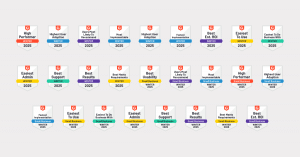Architectural invoicing represents the foundation of your firm’s financial health. Beyond simply requesting payment, your invoice structure communicates your firm’s professionalism, clarifies the value you provide, and establishes expectations for client relationships.
Many architecture firms lose thousands in revenue annually due to inefficient invoicing systems that allow billable hours to slip through the cracks or delay payment collection. The right invoice structure doesn’t just organize information, it transforms your billing process into a streamlined operation that improves cash flow, reduces administrative burden, and provides valuable insights into project profitability.
Architecture Invoice Structure Types
Fixed Fee Invoicing
Fixed fee invoicing establishes a predetermined price for the entire project scope. This structure works exceptionally well for clearly defined projects with minimal risk of scope expansion. Clients appreciate the predictability, making it easier to budget for your services.
For architecture firms, fixed fee structures require careful project planning and scope definition. While this approach simplifies client communications and reduces billing disputes, it places greater importance on accurate initial project estimates. To implement effectively, establish clear project milestones for payment scheduling and maintain detailed documentation of all deliverables to ensure profitability.
Hourly Invoicing
Hourly invoicing charges clients based on the actual time spent on their projects, creating a direct connection between effort and compensation.
This structure can be implemented in two distinct ways:
1. Hourly by role
2. Hourly by activity
Hourly by role assigns different rates to team members based on their position and expertise. Principals, project architects, designers, and drafters each have their own billing rate reflecting their experience level and value contribution.
Hourly by activity assigns rates based on the type of work performed, regardless of who completes it, with strategic services like concept design commanding premium rates compared to technical documentation or administrative tasks.
Both approaches offer transparency and flexibility for projects with evolving scopes while ensuring fair compensation for additional client requests. The key to successful implementation lies in meticulous time tracking systems that clearly categorize and capture billable hours.
Modern architecture firms rely on integrated software solutions that automatically sort and organize time entries for straightforward invoicing while providing valuable insights into project efficiency.
Percentage of Construction Invoicing
This structure calculates fees as a percentage of the total construction cost, creating a scalable approach that adjusts with project size. Commonly used for comprehensive architectural services, percentage invoicing aligns architect compensation with project value.
The structure typically involves billing at predetermined project phases like concept, design, documentation, construction, and administration, with each phase representing a portion of the total fee percentage. These percentages can range anywhere from 8% to 20%.
Choosing the Best Architecture Invoice Structure for Your Business
Align with Project Type and Scope
Select invoice structures that complement specific project characteristics. Fixed fee works well for standardized services with clear deliverables, while hourly invoicing better serves complex, evolving projects.
Consider using different structures for different service types within your practice, rather than applying a one-size-fits-all approach. The optimal structure provides fair compensation while addressing the unique aspects of each project engagement.
Consider Client Relationships and Expectations
Invoice structures significantly impact client experience and should reflect relationship dynamics. Long-term clients may appreciate the transparency of hourly invoicing, while new clients often prefer the certainty of fixed fees.
Government and institutional clients typically have specific invoicing requirements that may dictate your approach. Regardless of structure, providing detailed breakdowns that clearly communicate delivered value reinforces client confidence in your services.
Evaluate Internal Resource Management
Your invoicing structure affects internal operations beyond accounting. Hourly invoicing necessitates rigorous time-tracking systems and regular monitoring, while fixed fee structures demand excellent project management to maintain profitability.
Evaluate your firm’s existing processes and technology capabilities when selecting an invoice structure. The ideal approach integrates seamlessly with your workflow while minimizing administrative overhead.
Incorporate Financial Strategy Objectives
Strategic financial goals should influence invoice structure selection. Firms prioritizing cash flow stability benefit from structures with regular monthly billing cycles, while those focused on profitability may implement milestone-based approaches that include advance deposits.
Consider how different structures affect revenue recognition, tax planning, and financial reporting. The right invoicing approach serves as a financial management tool that supports your practice’s broader business objectives.
Customize Your Own Architecture Invoice Template with Total Synergy
With over twenty-five years of experience in the A&E space, Total Synergy’s process invoicing solution provides customizable invoice templates that adapt to your preferred structure, whether fixed fee, hourly, or percentage-based approaches.
From seamless general ledger integration to generating multiple invoices with a few clicks, it’s a fast and accurate solution for managing high volumes of billing. Our platform’s finance dashboard makes it easy to see your Work in Progress (WIP) and outstanding debtors. With clear, real-time insights, your A&E practice will be able to make smarter financial decisions.
Total Synergy’s cloud-based solution transforms invoicing from an administrative burden into a strategic advantage that improves cash flow and strengthens client relationships. Ready to modernize your firm’s invoicing process? Book a demo today and discover how our invoicing solution can enhance your practice’s financial performance.



